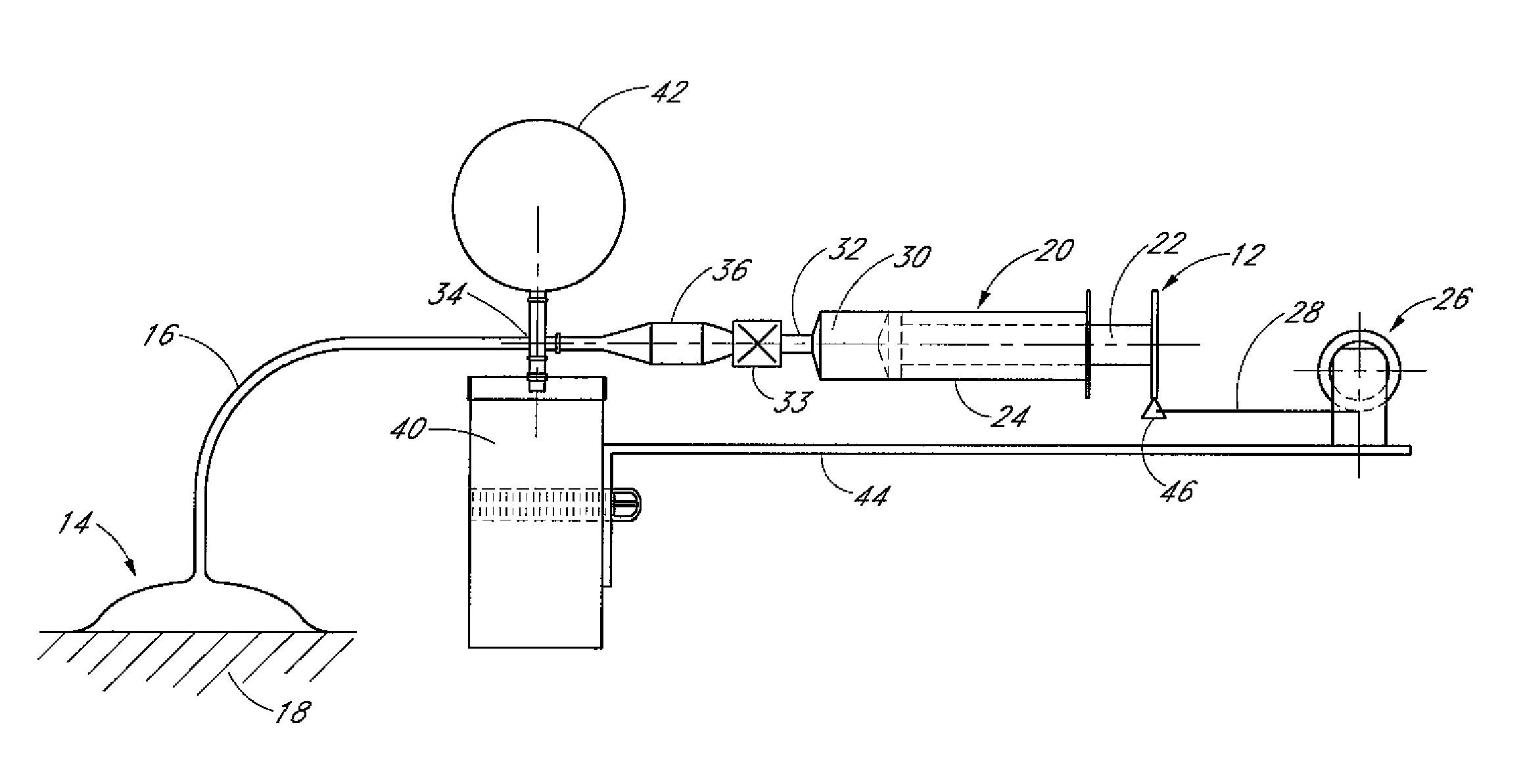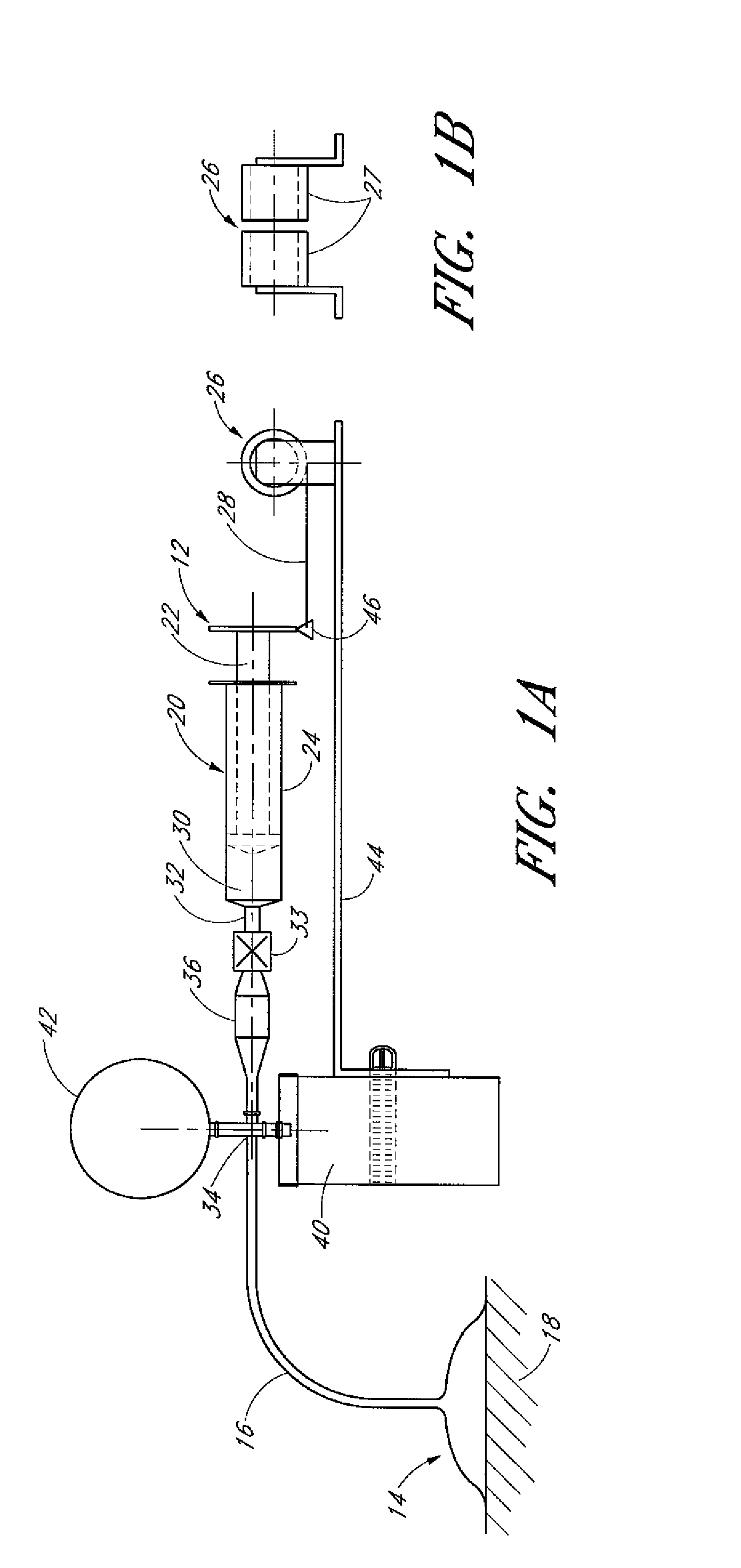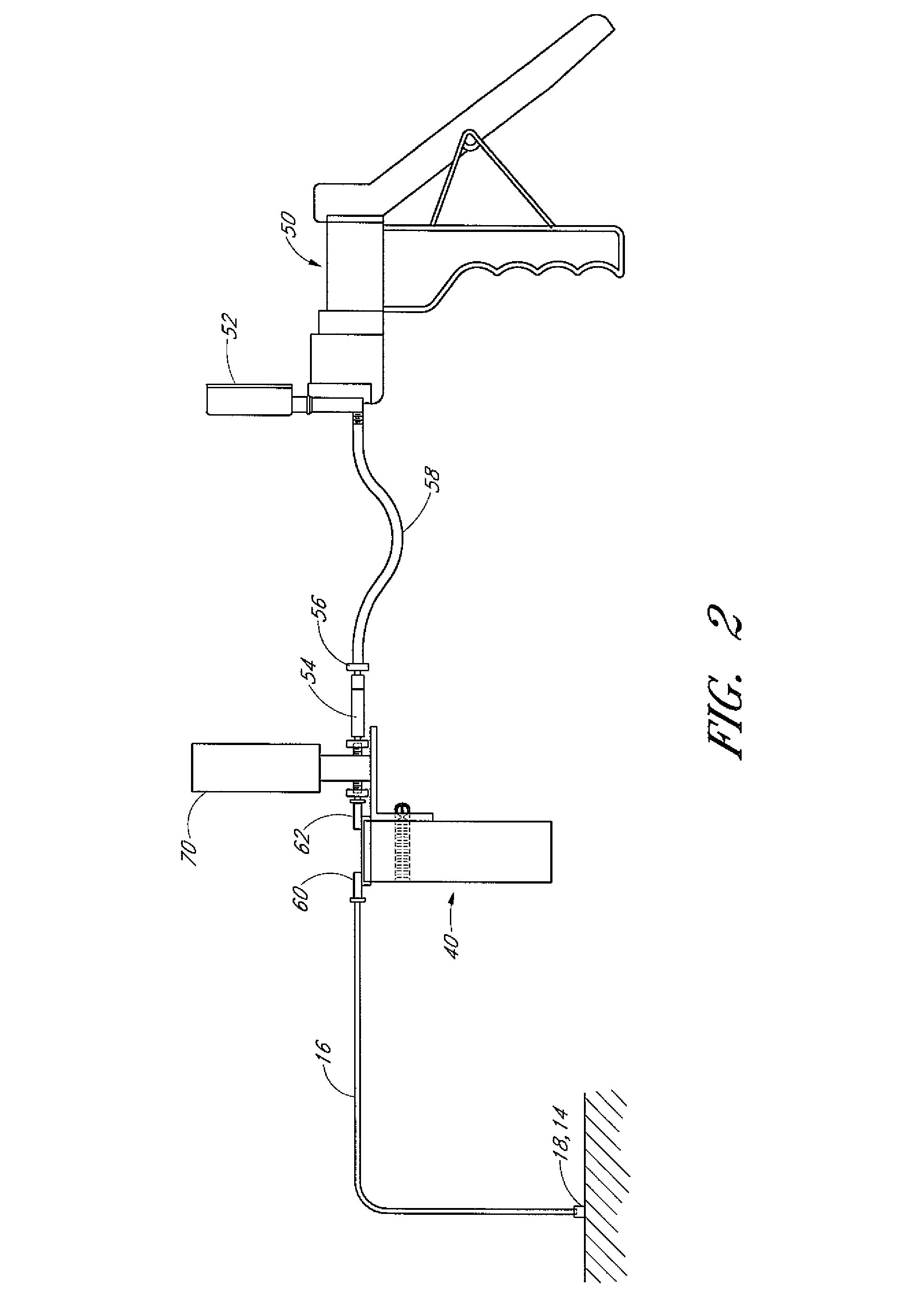Suction device and dressing
a suction device and dressing technology, applied in the field of treating a site, can solve the problems of large or infected wounds, inability to spontaneously close, wounds that cannot successfully fight bacterial infections, etc., and achieve the effect of reducing pressure, reducing pressure, and reducing pressur
- Summary
- Abstract
- Description
- Claims
- Application Information
AI Technical Summary
Benefits of technology
Problems solved by technology
Method used
Image
Examples
Embodiment Construction
[0012]Some embodiments set forth herein are directed to systems, methods and apparatuses for wound therapy. In particular, some embodiments disclosed herein relate to a system for the generation and application of reduced pressure (compared with ambient atmospheric pressure) to a site on a human or animal body and to a dressing (also referred to herein as a cover) at a wound site, and some embodiments relate to a wound dressing system configured to allow a user or medical practitioner to easily access a wound bed without disturbing a seal between the dressing and the healthy skin surrounding the wound. However, it will be appreciated that the systems, methods and apparatuses disclosed herein may have application to other fields. In certain preferred embodiments, the wounds being treated may include, but are not limited to, acute and chronic wounds, orthopedic trauma wounds, and post-Cesarean wounds, to name a few.
[0013]Some embodiments disclosed herein are directed to treating such ...
PUM
 Login to View More
Login to View More Abstract
Description
Claims
Application Information
 Login to View More
Login to View More - R&D
- Intellectual Property
- Life Sciences
- Materials
- Tech Scout
- Unparalleled Data Quality
- Higher Quality Content
- 60% Fewer Hallucinations
Browse by: Latest US Patents, China's latest patents, Technical Efficacy Thesaurus, Application Domain, Technology Topic, Popular Technical Reports.
© 2025 PatSnap. All rights reserved.Legal|Privacy policy|Modern Slavery Act Transparency Statement|Sitemap|About US| Contact US: help@patsnap.com



